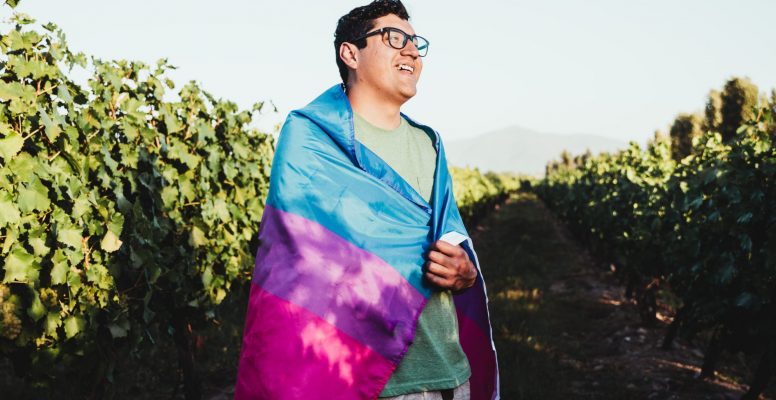
Validating and Including Bisexuality
Written By: Kennedy Rothenbuescher, Clinical Trainee at ACS, Outlet Program
IN LIFEwe want to make sure that everyone feels included, but what happens when both the LGBTQ+ community and the heterosexual community exclude people who are bisexual? Individuals who are bisexual tend to be outcasted from the LGBTQ+ community, as well as the heterosexual community, leaving them to feel isolated, ignored, and without a sense of belonging. Individuals who identify as bisexual face discrimination not only within these communities. but also in the dating world.
In the article, Examining the Existence of Biphobia in the Heterosexual and Homosexual Population, written by Patrick S. Mulick and Lester W. Wright. Jr., both state that bisexual individuals face ‘double discrimination’, which is defined as discrimination from both heterosexual and homosexual communities. This furthers the claim that there is noticeable discrimination from those who do discriminate against bisexuals. The article talks about how the LGBTQ+ community does not believe that bisexuals exist, as it’s only a stepping stone to being gay or lesbian. However, it also describes how the heterosexual community believes individuals who are bisexual are just experiencing a temporary phase. This is harmful to individuals who are bisexual, as it shows how both communities lack the understanding of their sexuality.
In the article, Stereotypes of bisexual people: What Do Bisexual People Themselves Think, written by Sara E. Burke and Marianne LaFrance, they describe how bisexual individuals would stereotype their own sexual orientation group. While the common misconception around bisexual individuals is that they are indecisive about who they want to be with, the findings from Burke and LaFrance state that bisexual people do not perceive bisexuality itself as a form of indecisiveness. This is why bisexual people may become more distant from other communities and often rely on other bisexual individuals, as they believe no one else is going to accept them. This leads them to start their own community where they can feel accepted, seen, and heard.
To think we are fighting for rights for the LGBTQ+ community to be accepting of all individuals regardless of their sexual orientation, yet at the same time discriminating against those who like both genders, does not make sense. It makes individuals who identify themselves as bisexual feel as though they are alone in their journey in life. Bisexual individuals are hearing from not only strangers, but also their friends and family, that their sexuality is just a phase or that they need to pick a side, when in fact, they can not help who they choose to love. Many individuals believe that when someone is bisexual and they end up getting married, whether it be of the same sex or the opposite sex, that they have finally “decided” and are no longer bisexual. However, if someone who is a woman marries a man, it does not mean that her sexuality has changed.
We often say that sexuality is not a choice, yet when it comes to someone who is attracted to both genders, people mistakenly believe that they have a choice. When looking to the future, I hope that there is more understanding and a sense of community for individuals who identify as being bisexual. This can happen through workshops, education, or individuals being more accepting of each other, as this can help individuals feel more of a sense of belonging.
___________________________
Resources Near You
Coast Pride
Address:711 Main St, Half Moon Bay, CA 94019
Outlet (Adolescent Counseling Services)
Address: 1779 Woodside Road, Suite 200, Redwood City, CA 94061
San Mateo Pride Center
Address: 1021 S El Camino Real, San Mateo, CA 94402
___________________________
References
Burke, S. E., & LaFrance, M. (2016). Stereotypes of bisexual people: What do bisexual people
themselves think?. Psychology of Sexual Orientation and Gender Diversity, 3(2), 247.
Mulick, P. S., & Wright Jr, L. W. (2002). Examining the existence of biphobia in the heterosexual
and homosexual populations. Journal of Bisexuality, 2(4), 45-64.
